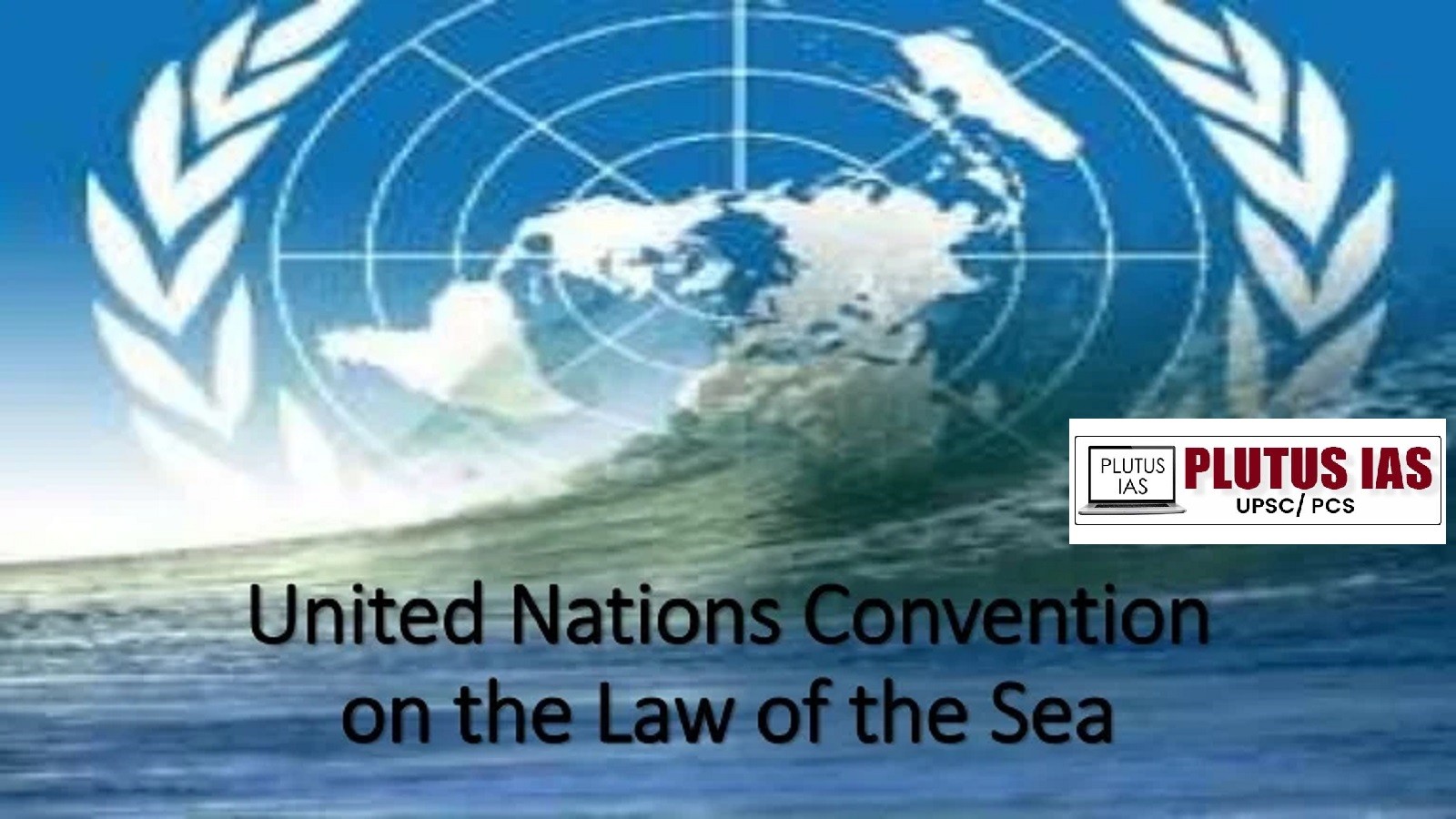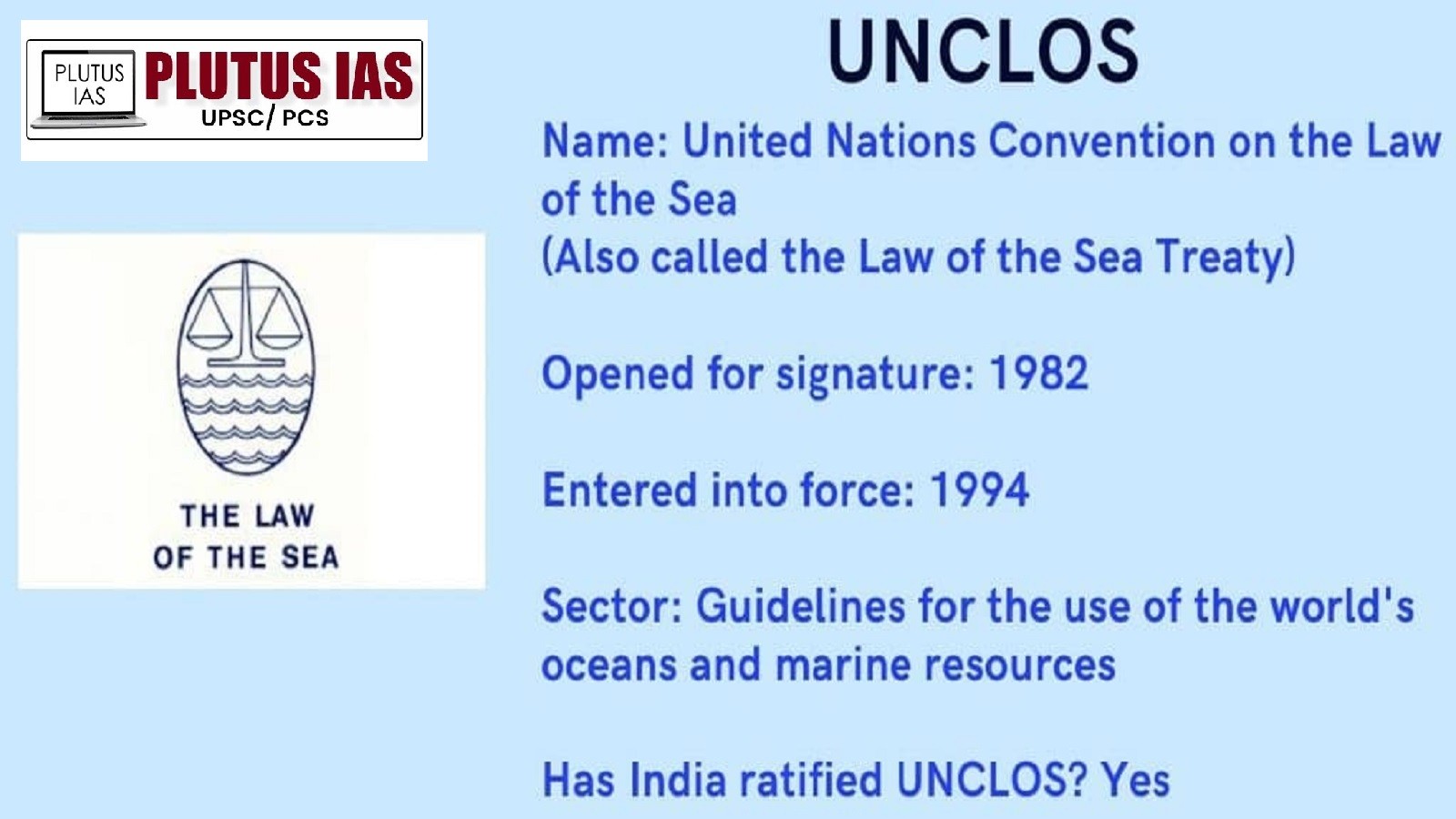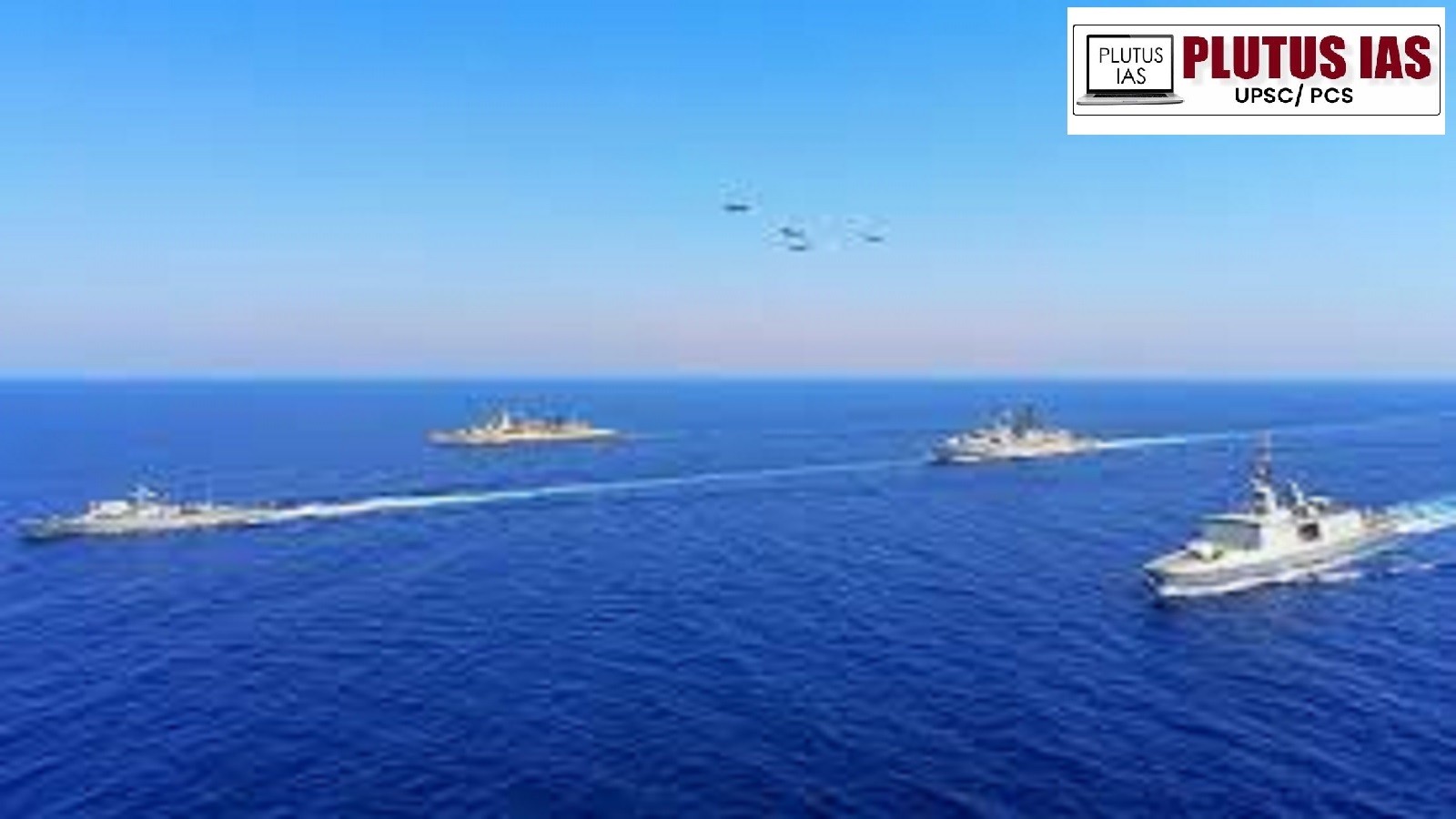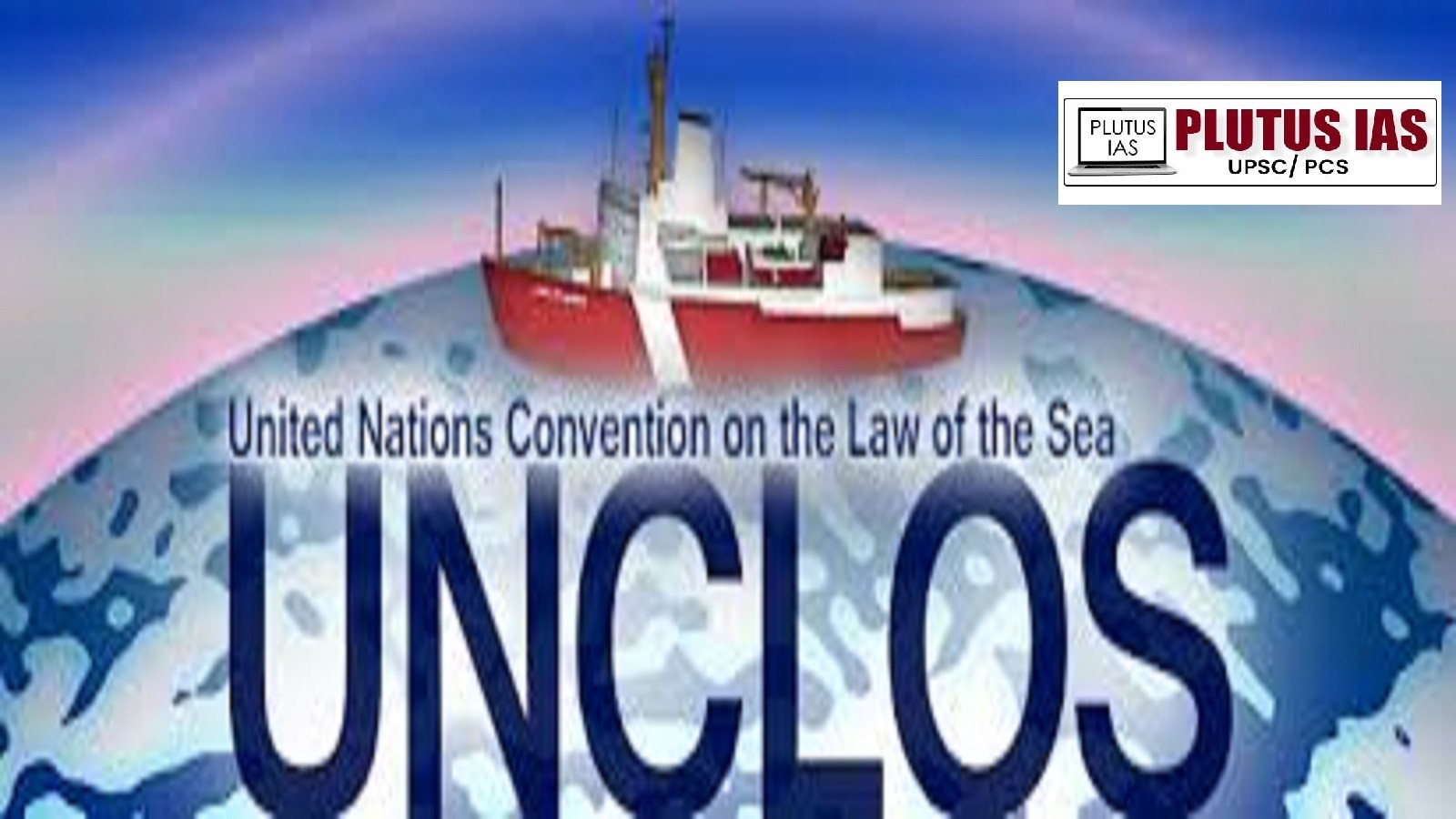02 Jul 30th Anniversary of International Seabed Authority
( This article is related to the section ‘ Governance and Polity, International Relations, Important International Institutions and Organizations ’ under General Studies Paper – 2 of UPSC Civil Services Mains Exam and ‘ United Nations Convention on the Law of the Sea (UNCLOS), International Seabed Authority (ISA), Marine Scientific Research , United Nations Convention on the Law of the Sea ’ under UPSC Preliminary Exam. It also includes suggestions from the PLUTUS IAS Team. This article is related to ‘ 30th Anniversary of International Seabed Authority ’ under ‘ Daily Current Affairs’.)
Why in the News ?

- Recently the International Seabed Authority (ISA), an agency working under the United Nations Convention on the Law of the Sea (UNCLOS), celebrated its 30th anniversary.
- This agency was established to oversee the exploration and use of non-living marine resources in international waters.
International Maritime Authority (ISA) :

- International Maritime Authority (ISA) AIt is an autonomous international organization formed in 1982 under the United Nations Convention on the Law of the Sea (UNCLOS) and the 1994 Agreement on the Implementation of Part XI of UNCLOS.
- Its headquarters are located in Kingston, Jamaica.
- The International Maritime Authority (ISA) comprises a total of 168 member states including India and the European Union.
- About 54% of the total area of the world’s oceans comes under its jurisdiction.
- International Maritime Authority (ISA) which organizes, controls and regulates all activities related to mineral resources on the seabed.
- This area lies beyond the boundaries of national jurisdiction.
- The principal objectives of the International Maritime Authority (ISA) include protecting and regulating the marine environment from the harmful effects of activities occurring on the high seas.
Under this it performs the following functions :
- To regulate all exploration activities and deep sea mineral exploitation operations.
- To ensure protection of the marine environment from the harmful effects of activities related to the deep seabed.
- related to the sea To encourage marine scientific research।
- This organization plays an important role in exploiting deep sea minerals, protecting biodiversity, and protecting the marine environment.
- Its decisions can also have an impact on the economy through rules such as reducing the sulfur content of fuels.
Relations between India and International Seabed Authority (ISA) :

- As part of the collaboration between India and the International Seabed Authority (ISA), on 18 January 2024, India submitted two applications for exploration in the international seabed of the Indian Ocean. Which are as follows –
India’s land exploration in international waters :
- Indian Ocean Ridge (Carlsberg Ridge) : Here India has submitted an application for exploration of polymetallic sulphide.
- Central Indian Ocean (Afanasiy-Nikitin Seamount) : India has applied for exploration of cobalt-rich ferromanganese layers here.
Currently, India has two contracts for exploration in the Indian Ocean :
- Polymetallic nodules in the central Indian Ocean basin and ridge.
- Polymetallic sulphide.
Exploration is important in the development of mineral resources, but we must also consider it along with the environmental impact and benefits associated with it.
United Nations Convention on the Law of the Sea (UNCLOS) :

- The ‘Law of the Sea Convention’, formally known as the United Nations Convention on the Law of the Sea (UNCLOS), was adopted in the year 1982 to establish the limits of jurisdiction over oceanic areas.
- In this convention, a distance of 12 nautical miles from the baseline is defined as the territorial sea limit and a distance of 200 nautical miles is defined as the exclusive economic zone limit.
- Under the ‘Law of the Sea Treaty’ there is a provision for transfer of technology and wealth from developed countries to underdeveloped countries.
- It is also expected to implement rules and laws to control marine pollution.
- India signed the United Nations Convention on the Law of the Sea (UNCLOS) in 1982.
- Three new institutions have been established under the United Nations Convention on the Law of the Sea (UNCLOS). Which are as follows –
- International Tribunal on the Law of the Sea : It is an independent judicial body established to adjudicate disputes arising in the context of UNCLOS.
- International Seabed Authority : It is a United Nations body established to regulate the exploration and exploitation of non-living resources of the oceans.
- Commission relating to the limits of the continental shelf : It concerns the implementation of the United Nations Convention on the Law of the Sea (the Convention) regarding the establishment of the outer limits of the continental shelf beyond 200 nautical miles.
Source – The Hindu and PIB.
Download plutus ias current affairs eng med 02nd July 2024
Practice Questions for Preliminary Exam :
Q.1. Consider the following statements regarding the International Maritime Authority. (UPSC-2018)
- It exploits deep sea minerals, protects biodiversity and protects the marine environment.
- Its headquarters are located in Kingston, Jamaica.
- The Law of the Sea Convention was adopted in 1982 to establish the boundaries of ocean zones.
- India signed the United Nations Convention on the Law of the Sea (UNCLOS) in 1982.
Which of the above statement /statements is/ are correct?
A. Only 1, 2 and 3.
B. Only 2, 3 and 4.
C. None of these.
D. All of the above.
Answer – D
Practice Questions for Main Exam :
Q.1. Explain the major provisions of the United Nations Convention on the Law of the Sea and discuss how the International Seabed Authority plays an important role in controlling mineral exploitation in the sea, protecting biodiversity and safeguarding the marine environment ? ( UPSC CSE – 2019 Word Limit – 250 Marks – 15 )




No Comments